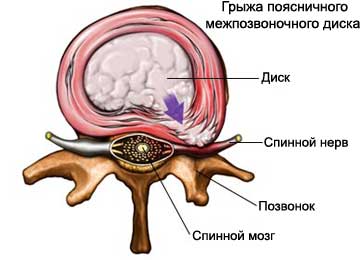Discography – Discogram
Description discography
Discography – Test to take the picture of the intervertebral disc. It involves injecting a contrast medium into the disc in the spine and perform X-rays. Roentgen this is a test, which It uses a small dose of radiation, to take a picture of structures and organs inside the body. The contrast agent can be more clearly displayed on x-ray disc.

Reasons for discography
This test is performed, to detect the presence of a herniated disk drive or abnormal, which is a source of pain. The pain occurs, when the disc in the spine goes out of the location. Disks – small, Round spacers between the vertebrae in the spine. A herniated disc can put pressure on nerves, which causes severe pain.
Possible complications discography
Complications are rare, but no procedure does not guarantee the absence of risk. Before, how to perform discography, you need to know about possible complications, which may include:
- Disc degeneration;
- Infection;
- Nerve damage;
- The injection of dye into the wrong area;
- Bleeding;
- Allergic reaction to the contrast dye.
How is the discography?
Preparation for the procedure
Your doctor may do the following:
- To inspect and examine the history of the disease;
- Pregnancy test – the test is usually not provoditsyav pregnant women;
- Determine, Do you have any allergies;
- Maybe, you need to take a mild sedative, to help you relax.
Before the procedure:
- If prescribed sedative reception:
- We need to organize a trip for the operation and back home. Besides, we need to agree with someone, to help you at home during recovery;
- Take sedatives, as prescribed by the doctor;
- Before the procedure, remove all metal objects from your body (eg, jewelry, Hearing Aids, prostheses).
Procedure discography
You will lie on your stomach or side on a special table. The specialist will take the correct position. You may be given antibiotics through a drip. You can also receive an injection of local anesthetic into the skin on the back. It will be done, to reduce the pain of needle insertion.
The doctor will use a method of obtaining images, called fluoroscopy. It combines X-ray technology, combined with the television screen. This will help to introduce the needle into the intervertebral disc. The contrast agent is introduced into the center of each disc. If the disk is normal, liquid will remain in the center of the disc. If there are anomalies, X-rays detect leaks.
During the examination, you will be asked to assess pain, which arises when injected. This will help the doctor determine the abnormal disk, which causes pain. After this study physician may make computed tomography, to see the spread of the contrast agent.
Immediately after discography
The hospital staff will monitor your vital signs during 30 minutes or more.
If you took a sedative, you can not get behind the wheel, operate machinery, or make important decisions, until the sedative wears off.
How long will discography?
Duration of treatment 30-60 minutes (additionally 30-60 minutes, if carried out CT scan).
Will it hurt when discography?
You may have pain from the injection of the contrast agent. The pain may last for several hours.
Results discography
The survey results will be transferred to the attending physician. Your doctor will tell you about the results and develop a treatment plan.
Contact your doctor after discography
After returning home, you need to see a doctor, If the following symptoms:
- Signs of infection, including fever and chills;
- Strong pain;
- Numbness in your legs;
- Problems with urination or stool;
- Symptoms of an allergic reaction (eg, hives, itch, nausea, swelling and itching of the eye, swelling of the throat, labored breathing);
- Worsening of symptoms.
